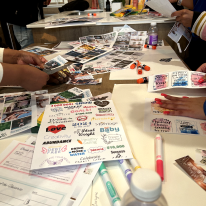At-risk youth are young people who are exposed to various factors that increase their likelihood of experiencing negative outcomes, such as academic failure, substance abuse, or involvement in criminal activities. These factors often include economic instability, lack of parental guidance, and exposure to violence. Community involvement plays a crucial role in supporting these young individuals by providing resources, mentorship, and opportunities for personal growth.
Challenges Faced by At-Risk Youth
Economic and Social Factors
At-risk youth often come from low-income families and communities that lack essential resources. Economic instability can lead to limited access to quality education, healthcare, and extracurricular activities. Additionally, social factors such as unstable family environments, peer pressure, and exposure to crime can further exacerbate their vulnerabilities. These challenges significantly impact their ability to achieve positive life outcomes.
Impact on Crime Rates
The correlation between at-risk youth and higher crime rates is well-documented. Young people who grow up in disadvantaged environments are more likely to engage in criminal activities as a means of survival or due to a lack of positive role models. Addressing these root causes is essential for reducing crime rates and creating safer communities.
Person Centered Initiatives Making a Difference
Community Services and Resources
Organizations like Chase Change are dedicated to addressing the needs of at-risk youth through innovative events and activities. Chase Change’s Rap Sessions, held at the Seat Pleasant Activity Center, provides a platform for young people to discuss their challenges, share experiences, and learn from positive role models. These sessions empower youth by giving them a voice and fostering a sense of community.
Success Stories from Local Engagement
Local engagement has numerous success stories that highlight the impact of person centered support. For example, Chase Change’s collaboration with community leaders and influencers like Stamaur ‘Ayye Pap’ Mitchell has created a supportive network for youth. These types of partnerships are meant to foster increased engagement, improved academic performance, and reduce involvement in criminal activities among participants.
Ways to Get Involved and Support
Volunteer Opportunities
Volunteering is a powerful way to support at-risk youth. Nonprofits offer various opportunities for individuals to get involved, from mentoring programs to organizing community events. Volunteers can make a significant difference by providing guidance, support, and positive interactions with young people.
Fundraising Events and Donations
Financial support is essential for youth advocates to continue their work. Fundraising events and donations help sustain programs that benefit at-risk youth. Community members can participate in fundraising activities or contribute financially to support these vital initiatives. Every contribution, no matter the size, helps create a brighter future for at-risk youth.
Conclusion
People from various backgrounds and demographics play an indispensable role in supporting at-risk youth by addressing the economic and social challenges they face and providing resources for their development. Initiatives like those led by Chase Change demonstrate the positive impact that community engagement and support can have on young lives. By volunteering, donating, and participating in community events, we can all contribute to creating a supportive environment where at-risk youth can thrive. Join Chase Change and local nonprofits in their mission to make a lasting difference in the lives of at-risk youth.




